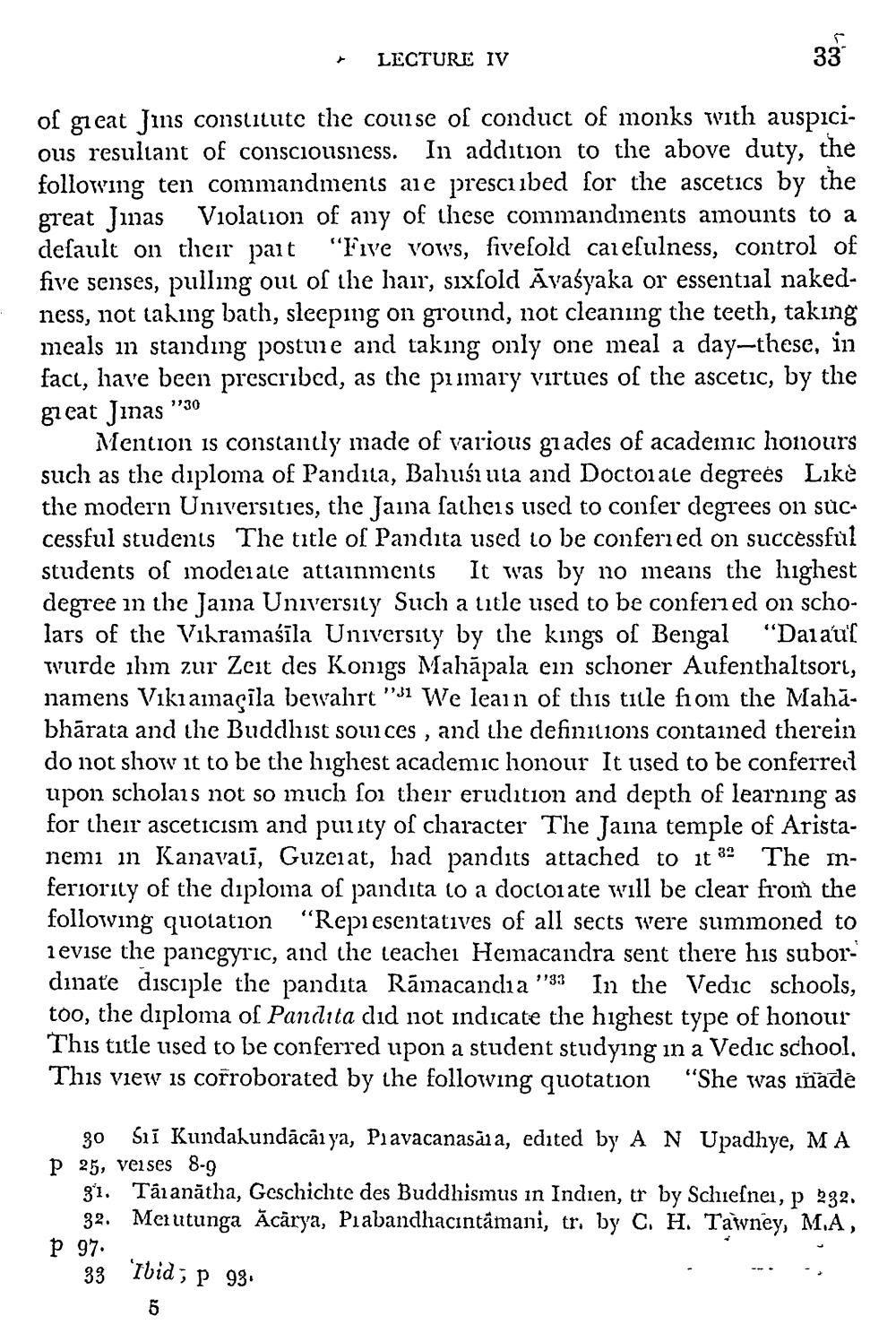________________
LECTURE IV
of great Jins constitute the course of conduct of monks with auspicious resultant of consciousness. In addition to the above duty, the following ten commandments are prescubed for the ascetics by the great Junas Violation of any of these commandinents amounts to a default on their part “Five vows, fivefold carefulness, control of five senses, pulling out of the hair, sıxsold Āvaśyaka or essential nakedness, not taking bath, sleeping on ground, not cleaning the teeth, taking meals in standing postue and taking only one meal a day-these, in fact, have been prescribed, as the primary virtues of the ascetic, by the great Jinas "30
Mention is constantly made of various giades of academic honours such as the diploma of Pandila, Bahuśı ula and Doctorale degrees Like the modern Universities, the Jaina satheis used to confer degrees on successful students The title of Pandita used to be conferied on successful students of moderate attainments It was by no means the highest degree in the Jaina University Such a title used to be confered on scholars of the Vikramaśīla University by the kings of Bengal “Dalaus wurde ihm zur Zeit des Konigs Mahāpala ein schoner Aufenthaltsori, namens Vikiamaçila bewahrt "1 We leain of this title from the Mahabhārata and the Buddhist sources, and the definitions contained therein do not show it to be the highest academic honour It used to be conferred upon scholais not so much for their erudition and depth of learning as for their asceticism and purity of character The Jaina temple of Aristanemi in Kanavati, Guzeiat, had pandits attached to it 39 The mferiority of the diploma of pandita to a doctoiate will be clear from the following quotation "Representatives of all sects were summoned to ievise the pancgyrıc, and the teachei Hemacandra sent there his subordinaťe disciple the pandita Rāmacandia '93 In the Vedic schools, too, the diploma of Pandita did not indicate the highest type of honour This title used to be conferred upon a student studying in a Vedic school. This view is corroborated by the following quotation "She was made
30 Sví Kundakundācãi ya, Pravacanasia, edited by A N Upadhye, MA p 25, veises 8-9
31. Târanātha, Geschichte des Buddhismus in Indien, tr by Schiesnei, p 232.
32. Merutunga Ācārya, Prabandhacıntamani, tr. by C. H. Tawney, M.A, p 97.
33 'Ibid; p 93.




